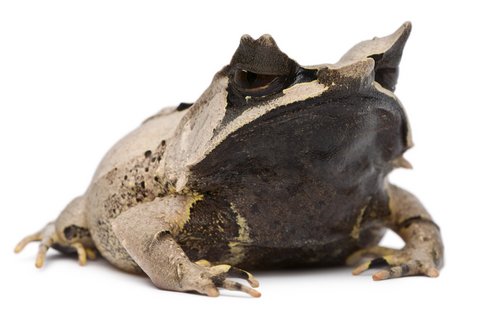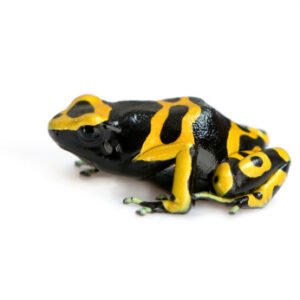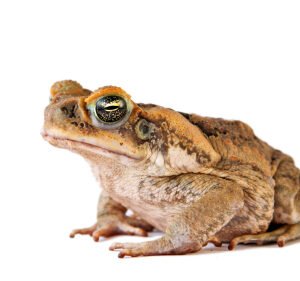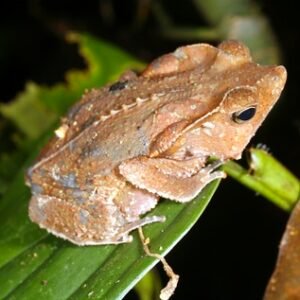Introduction to the Malayan Horned Frog
The Malayan horned frog, scientifically known as *Megophrys nasuta*, is a unique amphibian that captivates both researchers and nature enthusiasts alike. Belonging to the family Pelobatidae, this fascinating species is characterized by its remarkable morphology, particularly the horn-like structures located just above its eyes. This distinctive feature not only contributes to its striking appearance but also serves as a form of camouflage, helping it blend into its forested habitat.
Primarily found in the lush, humid regions of Southeast Asia, the geographical distribution of the Malayan horned frog includes countries such as Malaysia, Thailand, and parts of Indonesia. These frogs thrive in tropical rainforests, where high humidity and dense vegetation provide the ideal conditions for their survival. Their life cycle is closely tied to the forest environment, as they lay eggs in temporary pools of water, allowing the tadpoles to develop in these ephemeral habitats before metamorphosing into adults.
The Malayan horned frog exhibits a range of physical attributes that further distinguish it from other amphibians. An adult can reach a length of approximately 10 to 15 centimeters, with a robust body and a coloration that typically includes shades of brown and green, aiding in their camouflage among the leaf litter and forest floor. Their wide mouths and short limbs are typical of their predatory behavior, as they primarily feed on invertebrates, using their quick reflexes to catch prey.
This amphibian is not just a remarkable example of evolutionary adaptation; it also highlights the critical importance of preserving its natural habitat. The ongoing threats to biodiversity, such as deforestation and habitat destruction, pose significant risks to the Malayan horned frog and its ecosystem. Understanding this species and its requirements for survival emphasizes the necessity of environmental conservation efforts in Southeast Asia.
Behavior and Ecology of the Malayan Horned Frog
The Malayan horned frog, known scientifically as Megophrys nasuta, exhibits a range of fascinating behaviors and adaptations crucial for its survival in the dense tropical forests of Southeast Asia. This species is primarily nocturnal, which helps it avoid predators and hunt for prey during the cooler, more humid nighttime hours. Its diet primarily consists of insects and small invertebrates, which it captures using its unique hunting techniques. This amphibian employs a sit-and-wait strategy, blending seamlessly into its environment thanks to superb camouflage provided by its intricate skin patterns. The horned projections above its eyes further enhance its disguise, allowing it to resemble leaf litter or tree bark, making it difficult for both predators and prey to detect.
In terms of reproduction, the Malayan horned frog exhibits fascinating breeding habits. Males often engage in vocal displays to attract females, producing a series of calls that resonate through their lush habitat. The mating season typically coincides with the monsoon rains, which provide necessary moisture for egg-laying. Female Malayan horned frogs lay eggs in small, gelatinous clutches in temporary water bodies formed by seasonal rainfall, highlighting their adaptation to the region’s fluctuating wet and dry cycles.
Despite their unique adaptations, the Malayan horned frog faces numerous ecological threats. Habitat destruction, largely driven by agricultural expansion and urban development, poses a significant risk to their population. Additionally, climate change presents challenges such as altered rainfall patterns, which could impact their breeding cycles and food availability. Conservation efforts are underway to address these challenges, including habitat protection and restoration initiatives aimed at preserving the rainforest ecosystems crucial for the survival of this remarkable amphibian. These efforts underline the importance of maintaining biodiversity and safeguarding the rich environmental tapestry that supports species like the Malayan horned frog.





